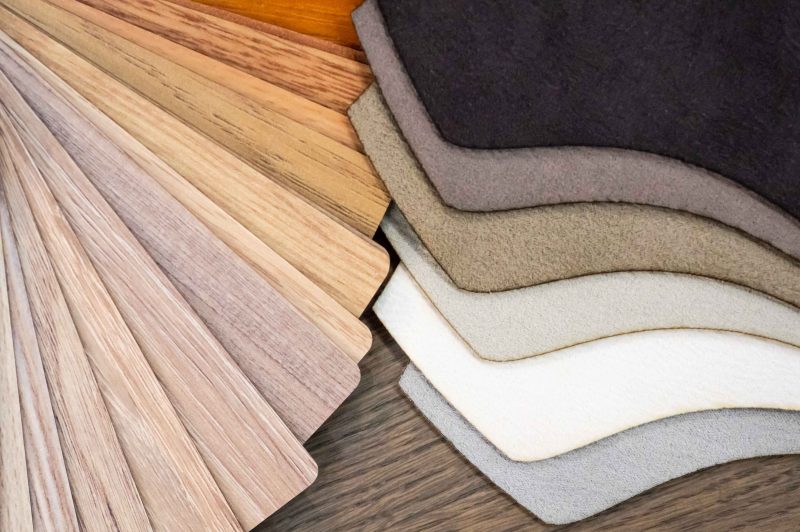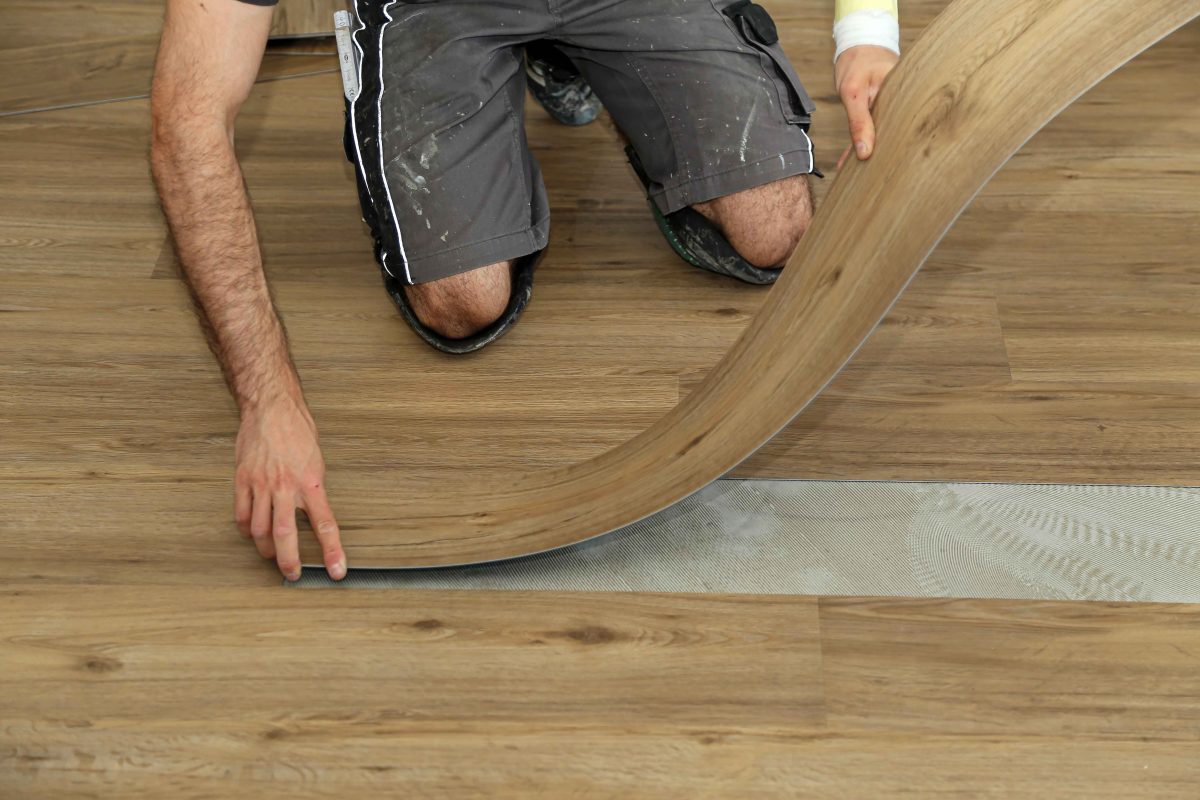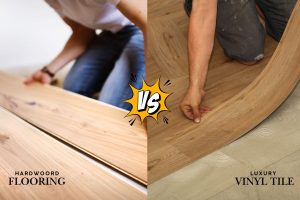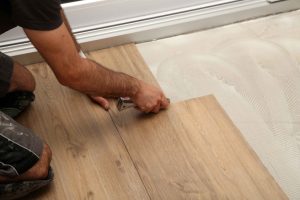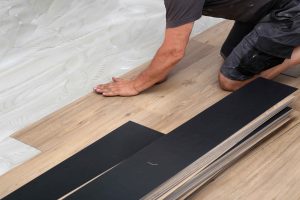What is vinyl tile flooring?
Vinyl tile flooring is a type of resilient flooring made from synthetic materials designed to mimic the appearance of natural materials like stone or wood. It comes in individual tiles or planks and is known for its durability, ease of maintenance, and water resistance. Vinyl tile flooring is also often chosen for its affordability, making it a super common material used for both residential and commercial applications.
Can you put vinyl flooring over tile?
Putting vinyl flooring over tile is a method that’s quickly becoming more popular among home and business owners. This is because it’s cheaper, transforming, and possesses minimal disruption. Simply clean, dry, and level the existing tile surface and it’s ready for vinyl flooring installation.
Types of vinyl flooring
Vinyl flooring comes in various styles, including patterns that mimic natural materials like wood and stone, with options such as luxury vinyl tile flooring for a high-end finish. For enhanced performance, you might consider waterproof vinyl tile flooring, which is ideal for moisture-prone areas like kitchens and bathrooms. Additionally, adhesive floor vinyl tiles can provide a secure bond, ensuring durability and longevity. All of these options provide a wide range of design possibilities so that you can explore your aesthetic preferences.
Benefits of covering floor tiles
Covering floor tiles with new flooring offers several benefits. Vinyl floor tiles, for instance, can provide an updated look and improved functionality without the need for extensive demolition.
Moreover, opting for vinyl tile flooring patterns allows you to enhance your space using a variety of designs. With adhesive floor vinyl tiles simplifying the installation process and luxury vinyl tile flooring offering a high-end appearance, your space will feel refreshed regardless of what you choose. Additionally, waterproof vinyl tile flooring is particularly advantageous in moisture-prone areas, so this will add long-term protection as a top-feature.

How to perfectly fit vinyl floor tiles to fit the room
Fitting vinyl floor tiles perfectly requires precision and careful preparation to ensure a seamless and durable installation.
Follow these steps to achieve a flawless result:
- Prepare the surface: Clean the floor thoroughly, removing any debris. Ensure it’s also dry.
- Measure and plan: Measure the room to determine how many vinyl floor tiles you need. This will allow you to better plan the layout to ensure symmetry.
- Cut the tiles: Using a utility knife or tile cutter, carefully cut the vinyl floor tiles to fit your dimensions. Make sure the cuts are straight for that snug fit.
- Apply adhesive: Apply adhesive evenly onto the floor surface.
- Lay the tiles: Begin laying the tiles according to your planned layout. Press each tile firmly in place.
- Seal the edges: After all tiles are in place, seal the edges with a waterproof sealant to prevent water infiltration.

Maintenance tips after laying vinyl floor tiles over a tile
After laying vinyl floor tiles over existing tile you will use your new flooring as expected. However, we recommend that you clean your floor regularly, avoid harsh chemicals, use floor mats or rugs to minimize wear and tear, and address spills promptly. All of the above suggestions will ensure the longevity of your new floor.
Frequently Asked Questions
1. How to clean vinyl floors?
To clean vinyl floors, use a soft broom or vacuum followed by a damp mop with a mild detergent. We also recommend that you avoid using any harsh chemicals or the use of excessive water when cleaning vinyl flooring.
2. How to install vinyl plank flooring?
To install vinyl plank flooring, prepare the subfloor, lay out and fit the planks in your desired pattern, and secure them in place—usually this is done via click-lock or adhesive method.
3. Can you lay vinyl flooring over tile?
Yes, you can lay vinyl flooring over tile by ensuring the tile surface is clean, dry, and level to provide a stable base for the new vinyl.
4. How to cut vinyl floor tiles?
To cut vinyl floor tiles, measure and mark the designed cut line, then use a utility knife or a vinyl tile cutter to score the tile along the line.
5. How to polish vinyl floor tiles?
To polish vinyl floor tiles, first clean the floor thoroughly, then apply a vinyl floor polish using a clean mop. Allow it to dry for that glossy finish.
6. Does vinyl flooring scratch easily?
Vinyl flooring is generally resistant to scratches, but it can still be scratched by sharp and/or heavy objects. Be sure to use protective pads under your furniture and avoid dragging heavy items across your floors.
7. Where to buy vinyl flooring tiles online?
You can buy vinyl flooring tiles online at Flooring Supply Shop, which offers a diverse selection of styles and prices to suit various applications and aesthetics.
